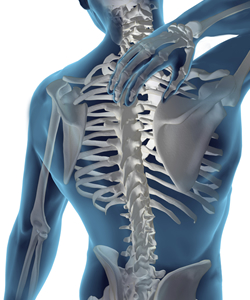Patient Education: The Aging Spine
 As the human spine ages, a number of conditions can result in chronic back and neck pain. At the Miami Spine Institute, we are dedicated to ensuring you can once again live a pain free life.
As the human spine ages, a number of conditions can result in chronic back and neck pain. At the Miami Spine Institute, we are dedicated to ensuring you can once again live a pain free life.
Some of the more common disorders we treat at the Miami Spine Institute include:
- Herniated disc - A.K.A “slipped disc” This disorder refers to degeneration, trauma, or injury to a disc in the spine, resulting in the disc protruding toward the nerves (“pinched nerve”) in the spinal column. This can lead to back pain and leg pain. Learn more about herniated discs »
- Disc degeneration - As a person gets older, so do their bones and soft tissues. Degeneration refers to discs drying out and losing their ability to cushion the vertebrae (bones of the spinal column). Degenerative disc disease (DDD) is considered to be a normal part of aging, however this disorder can cause severe and constant chronic neck pain or back pain.
- Spinal stenosis - is the narrowing of the lumbar (back) or cervical (neck) spinal canal. Spinal stenosis can cause compression of the spinal cord or compression of nerves as they leave the spinal cord and travel to the rest of the body. This can cause cramping, pain, and numbness in the legs, back, neck, shoulders or arms.
- Spondylolisthesis - the anterior displacement of one vertebra in relation to the vertebrae below. This “mal alignment” of the spine can lead to back pain and leg pain. There are different types of spondylolisthesis. X-rays, MRI’s and CT scans can help make the diagnosis.
These spinal disorders can greatly inhibit your life. The physical pain and exacerbation begins when these disorders put pressure on the nerve roots or spinal cord nearby, causing pain, numbness, or even weakness in the limbs. These conditions can be treated with anti-inflammatory medications (NSAIDs), epidural steroid injections or blocks, physical therapy, or surgery, with the aim of relieving the inflammation or pressure on the nerve. At the Miami Spine Institute, we are dedicated to restoring patient function and relieving pain with the least invasive option that is effective.
Dr. Rajadhyaksha and his partners at the Miami Spine Institute will conduct a thorough orthopaedic spinal evaluation using tools such as MRI and electrodiagnostics to determine the correct way of treating your neck or back pain. Appropriate care begins with an appropriate diagnosis.
Back Pain
Back pain usually originates from the muscles, nerves, bones, joints or other structures around the spine. Back pain often occurs when one or more nerves in the spinal column are impinged, or pinched. This is commonly caused by a disc or bone spur pushing into the canal that houses the spinal cord and the nerve roots. Often, back pain can be treated non-surgically, but in some cases, back or spine surgery become necessary.
Neck Pain
The cervical spine is the part of the spine in your neck. The cervical spine must allow for a significant amount of movement, in addition to supporting the weight of the head. The other parts of the spine are relatively protected from injury, the cervical spine has a relatively small number of muscles and ligaments that surround and protect it from injury. Injury to the cervical region of the spine is both dangerous and debilitating.
Neck pain may result from abnormalities in the soft tissues (muscles, ligaments, or nerves) or in the vertebrae or joints of the cervical spine. The most common causes of neck pain are degenerative diseases, such as arthritis or soft tissue abnormalities following a serious injury. Neck problems may cause pain felt in the upper back, shoulders, or arms.
